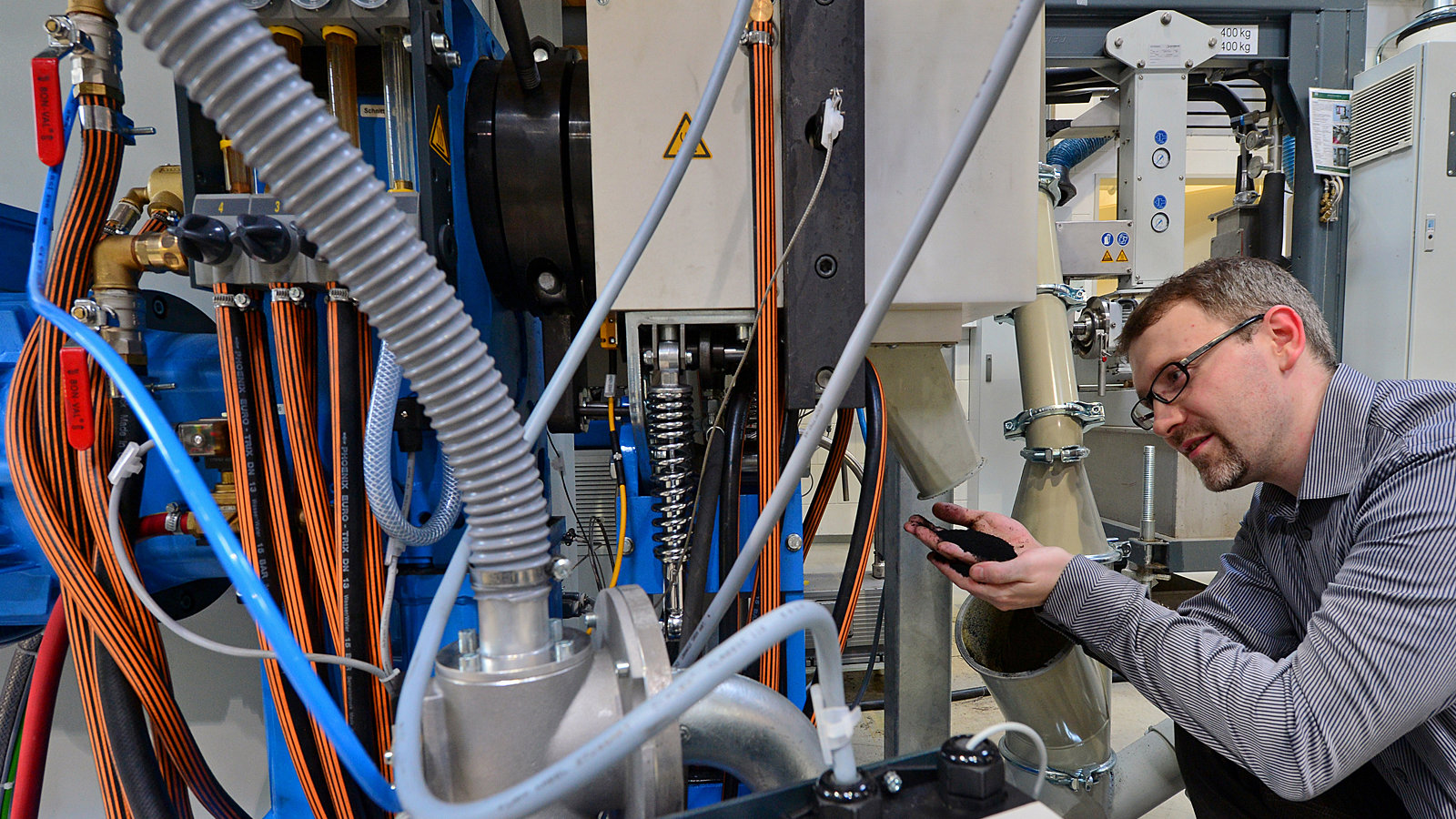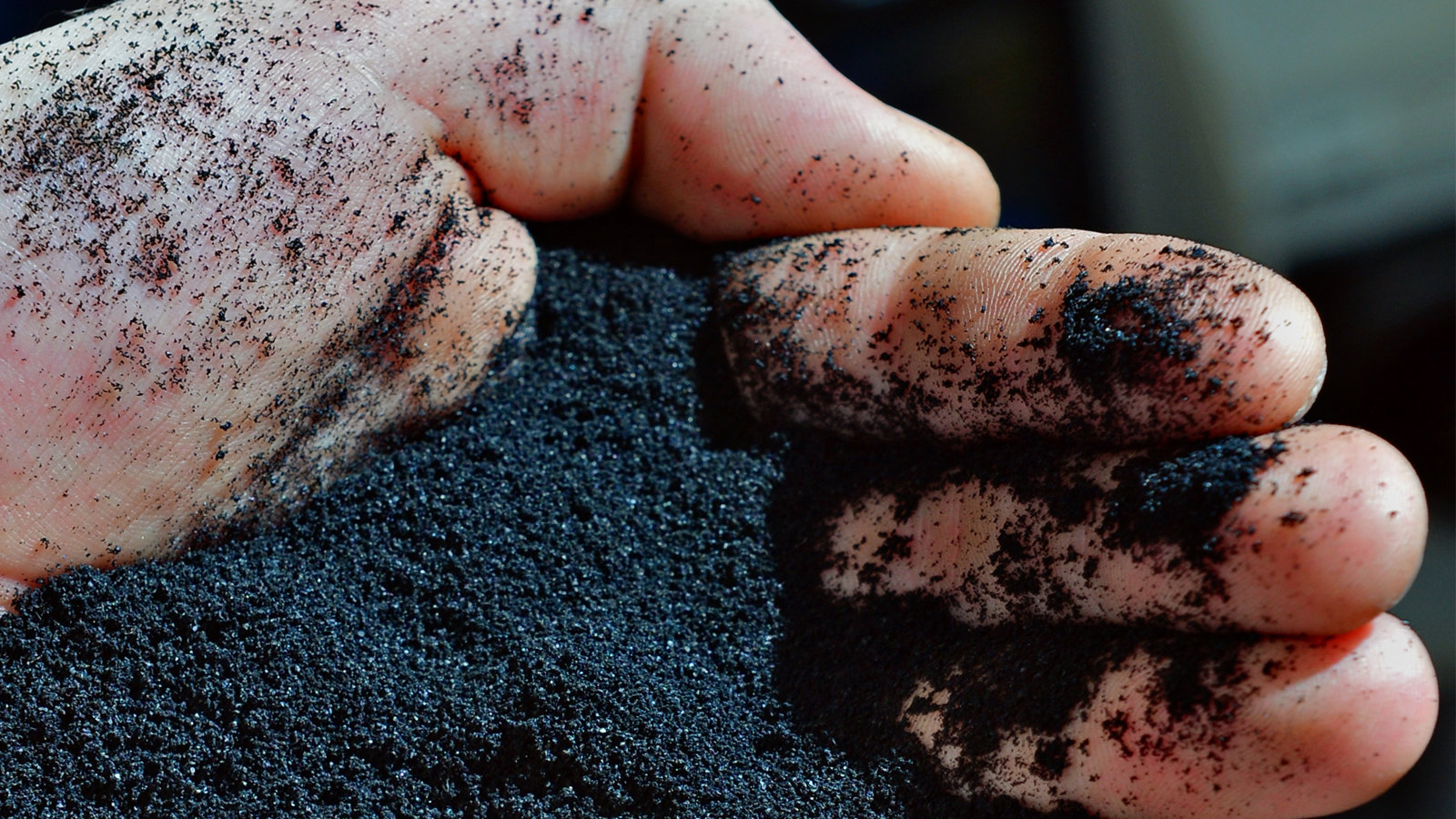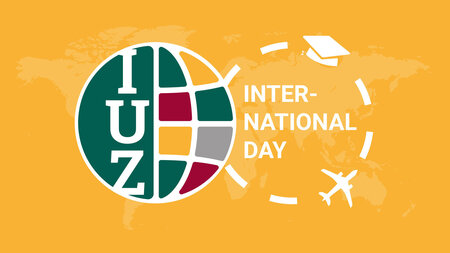The Secret Life of Tyres
The Chemnitz Institute of Lightweight Structures takes a closer look at the ecological recycling of elastomers from used tyres
-

The Reaktruder machine grinding elastomer residues. Dr. Stefan Hoyer, research fellow at the Institute of Lightweight Structures at Chemnitz University examining the fine powder. Picture: Hendrik Schmidt -

Fine powder of elastomers. Picture: Hendrik Schmidt
What do we do with old car tyres? That’s the issue researchers from the Institute of Lightweight Structures at Chemnitz University of Technology are investigating right now. Seeing that we are dealing with around 1.8 billion used tyres worldwide each year, the issue becomes even more important for conserving resources and protecting the environment. “More than half of all tyres are re-used energetically, i.e. burned”, Dr. Stefan Hoyer explains. He is a research fellow at the Institute of Lightweight Structures and investigates the field of elastomer recycling, i.e. the question of what plastics can be used for that retain their shape while being elastically deformable, such as you can find in tyres. “Recycling rubber is difficult, because for every special use there is a special mixture. Purity of the material is of the highest priority and with tyres it is especially hard to come by”, Hoyer explains.
Developing New Materials
The solution the Research Area “Extrusion Technologies and Recycling” came up with is as smart as it is efficient. Used tyres are usually fragmented into rough granulates and then pressed with added binding agents in order to produce floor or fall protection mats, or rubber coatings in the automotive sector. They are also an often-used granulate for artificial turf on sports fields and playgrounds. Chemnitz University now develops novel materials of high quality and performance by mixing fine rubber powders with thermoplastics. These thermoplastics-elastomer-compounds can be melted and therefore become complex components through e.g. injection moulding processes. Later on, no one will be able to tell that those products used to be tyres.
This kind of recycling comes with its own special processing technology called one-step direct extrusion. “We combine compounding with profile extrusion, i.e. the mixing of the input materials with the forming process. This way we save one process step and therefore energy, and we protect the material from heat damages”, Hoyer explains. This technology allows for the production of continuous high-quality mats for wear protection or sound insulation. “Currently we are still launching our technology on the market, but we are already in close cooperation with a local company.”
New Technology Reduces Resource Consumption –Potential for MERGE
Yet another technology developed by Stefan Hoyer’s team is already used on an international scale: “We were able to optimise the recycling of technical elastomers”, Hoyer proudly explains. Technical elastomers are rubber materials applied for technical purposes, e.g. seal rings. A lot of waste material is generated during their production which has to be deposited of at a high cost. “Our technology can prepare the residues so that they can be redirected into the production cycle. The pure recycled material is subsequently mixed into the input material and the process begins anew.” The recycled material is fine powder from the production residues which are ground in the so-called “Reaktruder”. Warm grinding as a technology was already state of the art, but Hoyer developed it further and optimised it in his PhD thesis. His objective was to improve the process stability, facilitate the cleaning, design a more compact machine and reduce the wear effect. Thanks to this process even small batches can be recycled economically and purely with respect to their mixtures. “In passing we were also able to reduce the energy consumption by about 60 per cent”, Hoyer adds.
The technology is intended for small and medium enterprises (SME) wanting to recycle their own residues. With this efficient tool at hand they can recycle elastomers and thus use and re-use input material sustainably. Savings in energy demand, disposal costs, resources and CO2 emissions can be added to the list of advantages. “But we are still planning on much more”, says Hoyer. “We want to take part in the second phase of the Federal Cluster of Excellence MERGE, if it is granted by the German Research Association DFG. In the area of material sciences we would focus on fundamental research, vary the mixtures of our thermoplastics-elastomer-compounds and work with additional thermosets or elastomers. Developing novel materials, characterising them and developing efficient processing technologies for them, that’s what we are going for.”
Matthias Fejes
14.07.2017




